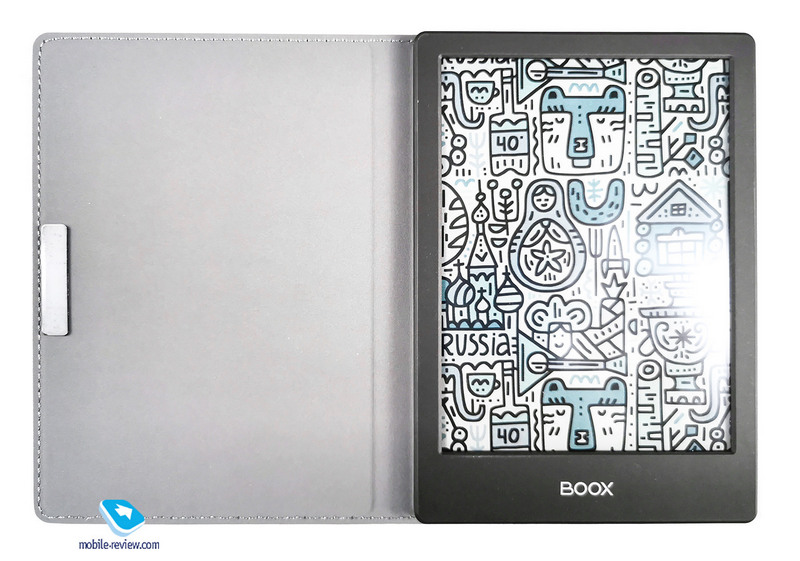
Content
- TECH SPECS
- Positioning
- Equipment
- Design, dimensions, controls
- Screen
- Software features, speed of work
- Interfaces, battery
- Impressions, competitors
| TECH SPECS | |
| Screen | 6 inches, E Ink Kaleido, 1072 × 1448 dots, touch, 4096 colors, 300 ppi (100 ppi in color mode), reflective backlight MOON Light |
| Memory | 2 GB of RAM, 32 GB of internal storage |
| Performance | Qualcomm Octa-Core Processor up to 2GHz |
| Battery | Non-removable, Li-Pol 1500 mAh |
| Wireless Interfaces | Wi-Fi IEEE 802.11 b / g / n / ac, Bluetooth 4.1 |
| Supported file formats | TXT, HTML, RTF, FB2, FB2.zip, DOC, DOCX, PRC, MOBI, CHM, PDB, DOC, EPUB, JPG, PNG, GIF, BMP, PDF, DjVu, MP3, WAV, CBR, CBZ |
| Body color and materials | The black; plastic |
| Dimensions | 153 × 107 × 6.8 mm |
| Features | Android 9.0 without GMS, microUSB port, USB OTG, no audio output with audio support, microphone, Wi-Fi sync, Send2boox PUSH service |
| Price | 19 990 rubles |
Positioning
For the Russian market, as well as for any other market, e-books with a color E Ink screen are an absolute novelty. Previously, under the guise of color e-books, only tablets with reduced functionality and even more reduced performance were offered. However, the “electronic paper” E Ink Kaleido is just a classic screen for e-book readers, only in color. This has both pros and cons. Huge battery life, comparable to black and white e-books, soft, “eye-safe” backlight, but the screen is just as slow, and color reproduction capabilities are incomparable even with the most budgetary LCD solutions. In addition, in color, the resolution drops to 100 dpi versus 300 dpi in black and white.
We already had a controversy on our site about the PocketBook 633 Color, and now it’s time to take a look at its direct competitor. The screen technology is the same, but completely different settings, and most importantly, like other ONYX BOOX readers, the Android OS is present here. But this time it is quite relevant Android 9.0, and most importantly, on a decent performance eight-core platform from Qualcomm.
Equipment
- EBook
- Cover book
- USB-microUSB cable
- Instruction and warranty card
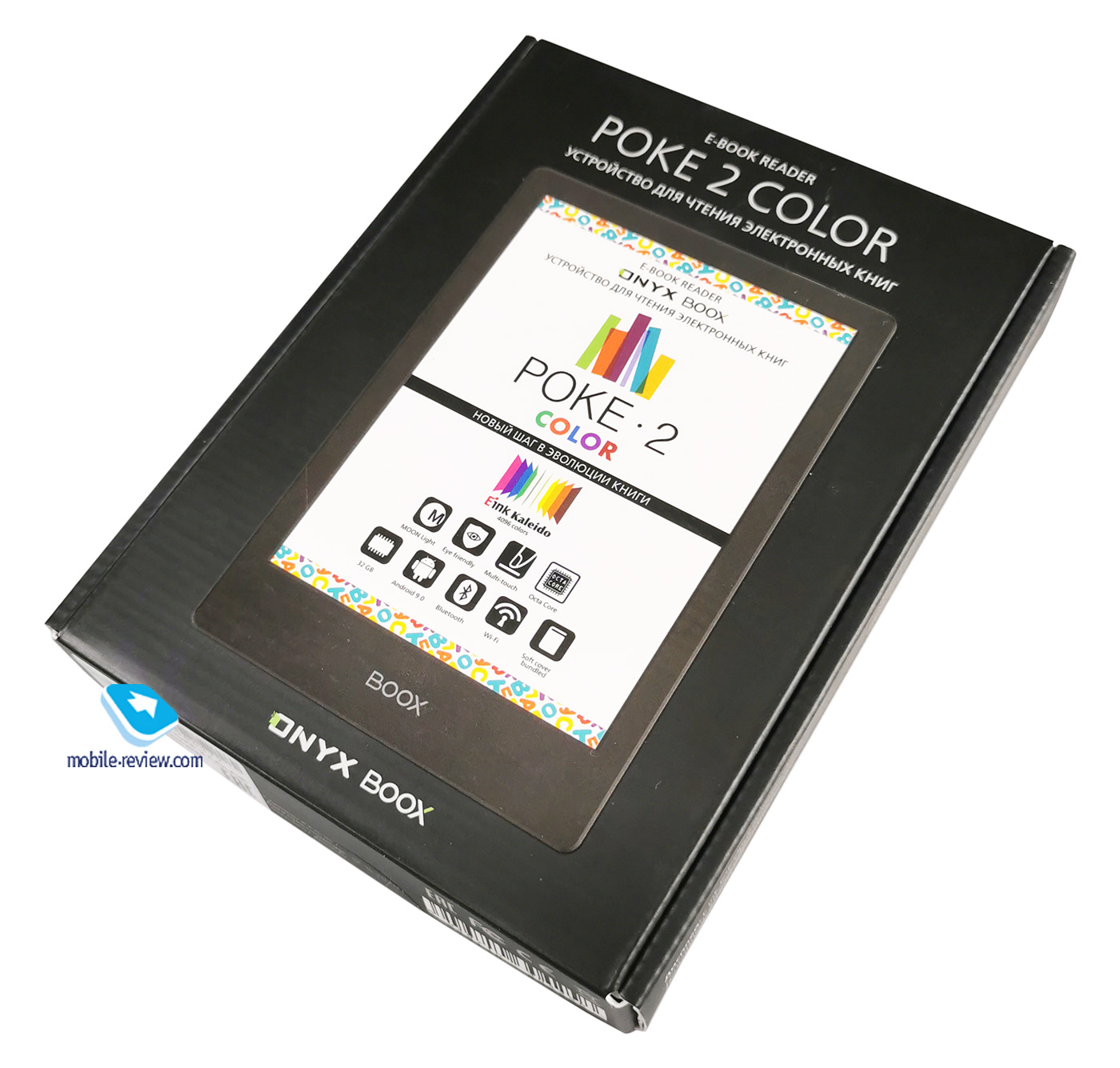
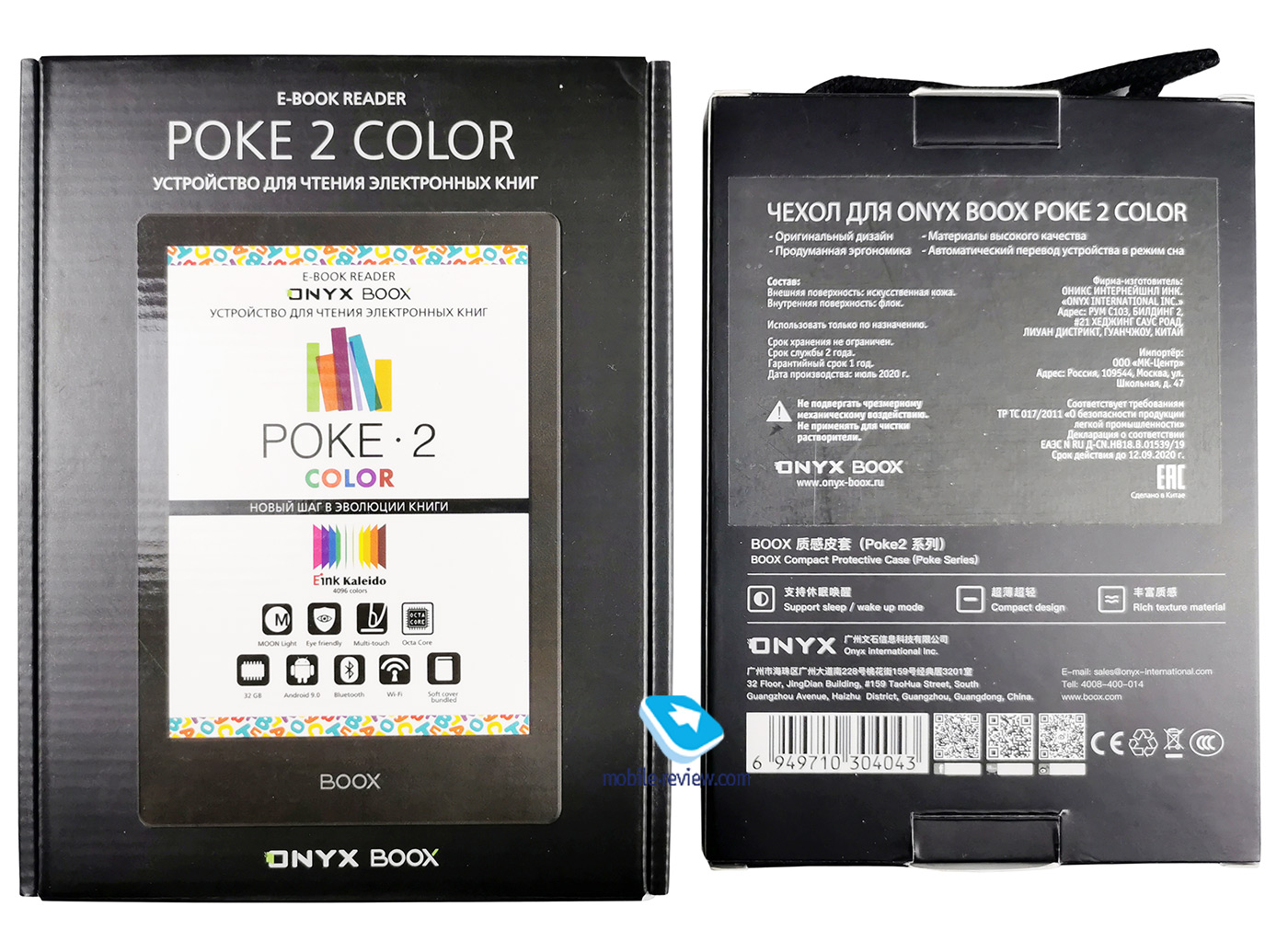
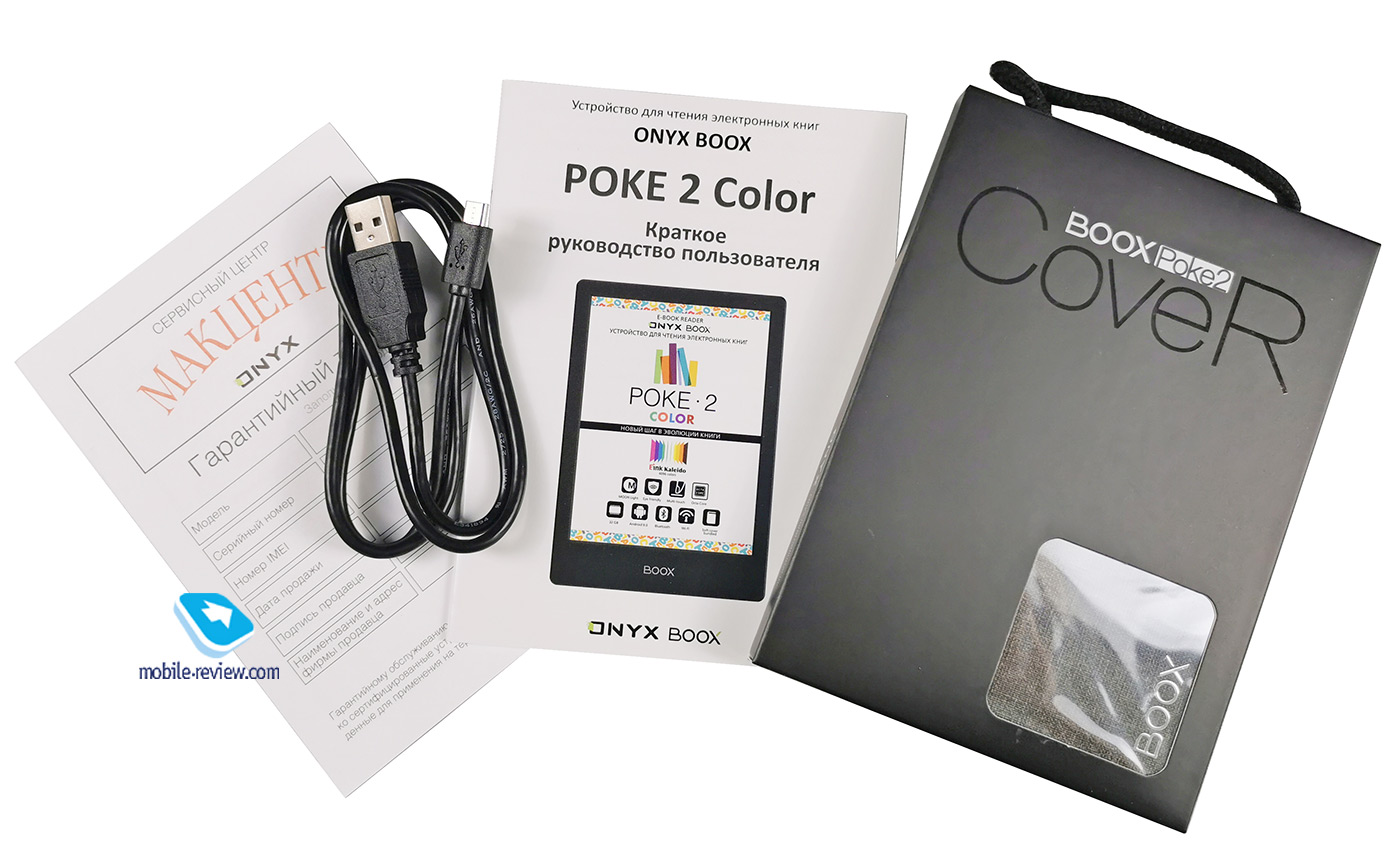
Similarly to the flagship solutions, Poke 2 received a “smart” case-book in the set, which allows the e-reader to be put into sleep mode when closed. It is made of dense and hard material, which allows you to count on good protection in case of falls (the cover is noticeably larger in size than the device itself, so even the ends will be covered from impact), but it looks much better than it feels in the hands. This material cannot be called otherwise than leatherette, although the manufacturer prefers to use the more pleasant name “artificial leather”. In addition, the cover is attached to the device by means of glue pads, so it won’t work quickly and painlessly.


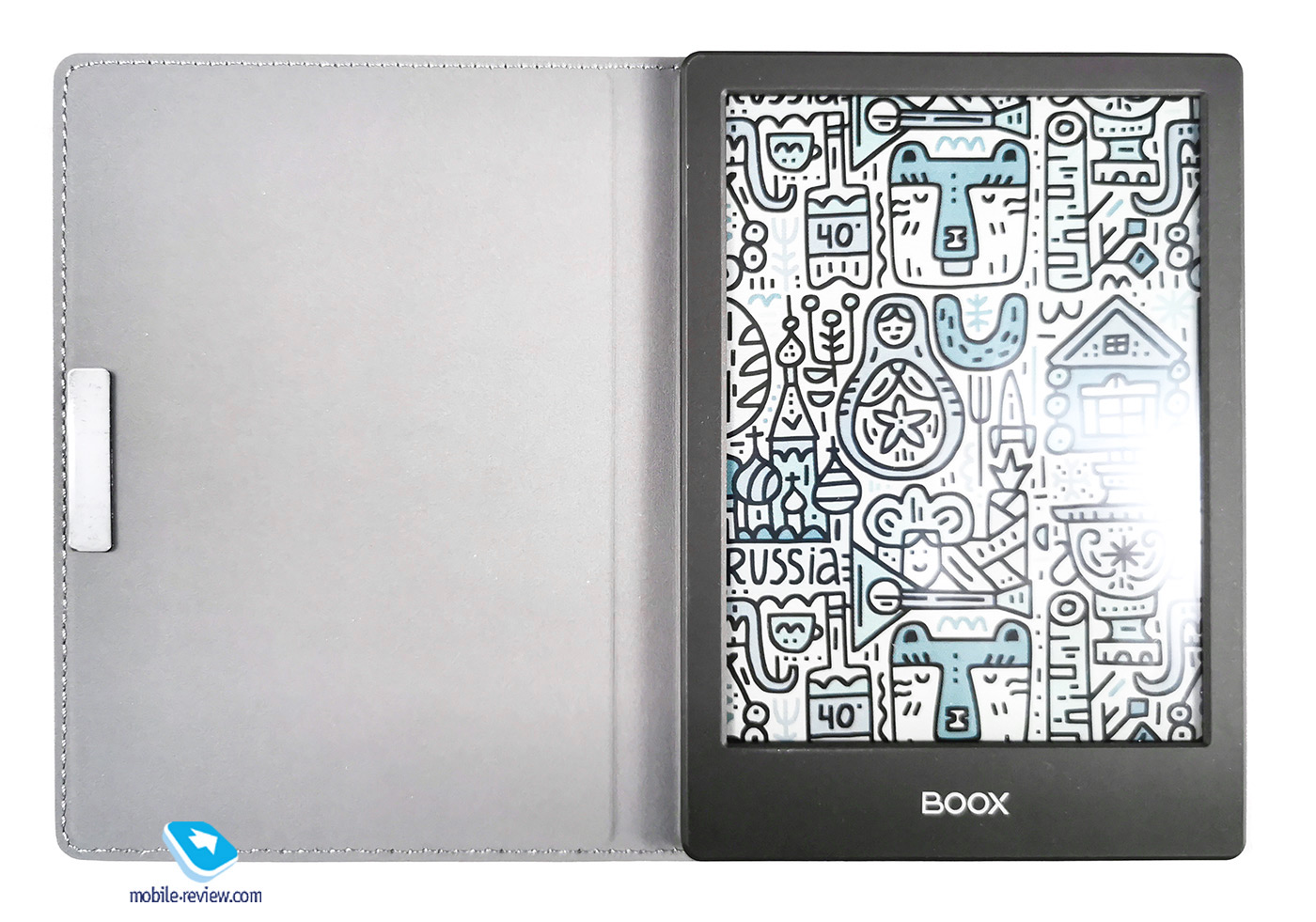
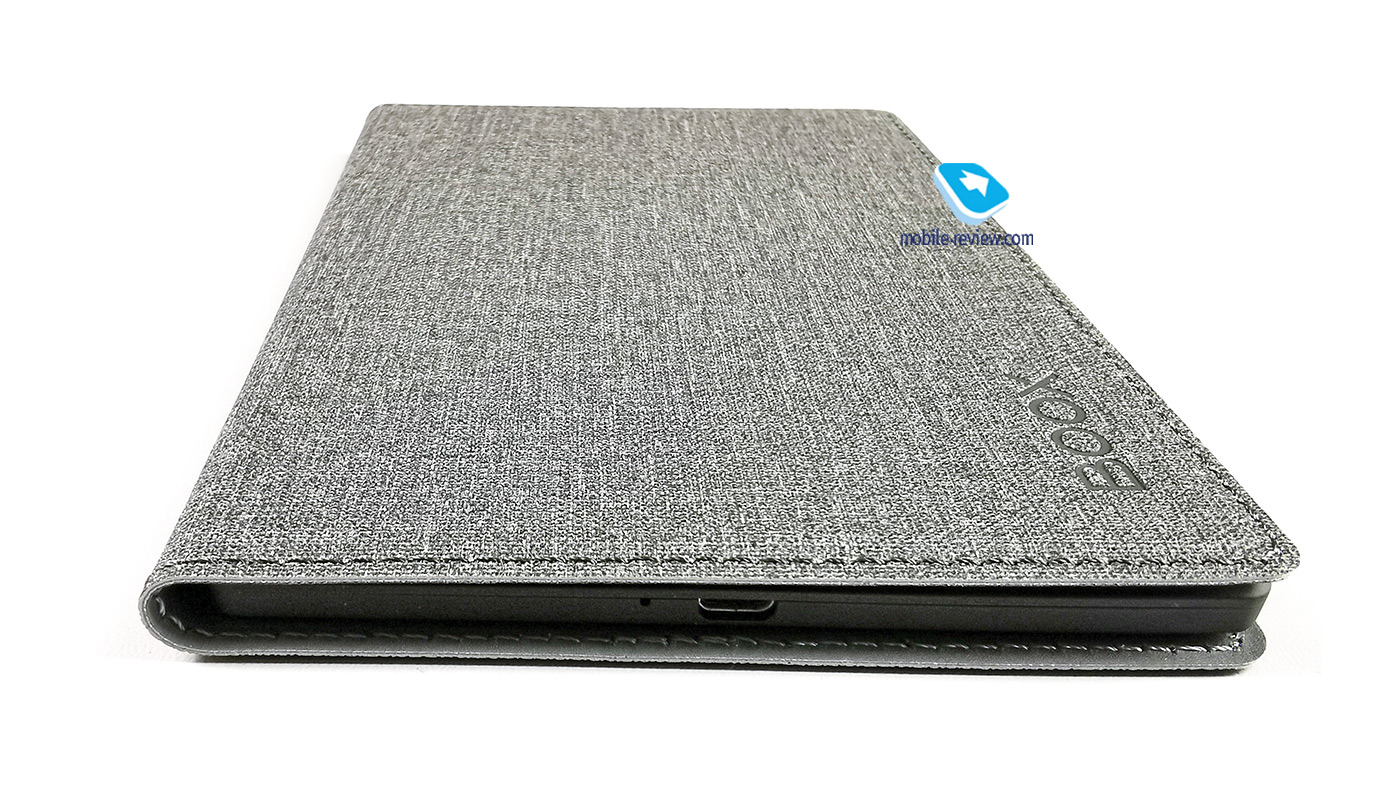
The device supports audio playback, but, like many modern smartphones, it does not have a separate audio jack, there is no headset or headphones in the kit either. As well as the power supply.
Design, dimensions, controls
Externally, Poke 2 is a typical 6-inch medium budget e-book reader. Medium-sized frames around the screen by the standards of this class of devices, a minimum of control elements, a case made of ABS plastic with a soft-touch coating. Full and pleasant minimalism for a gadget where the main thing is the screen. The build quality is excellent – there are no backlashes, no squeaks. Yes, it would be strange if such minor flaws were made in an e-book for 20 thousand rubles.
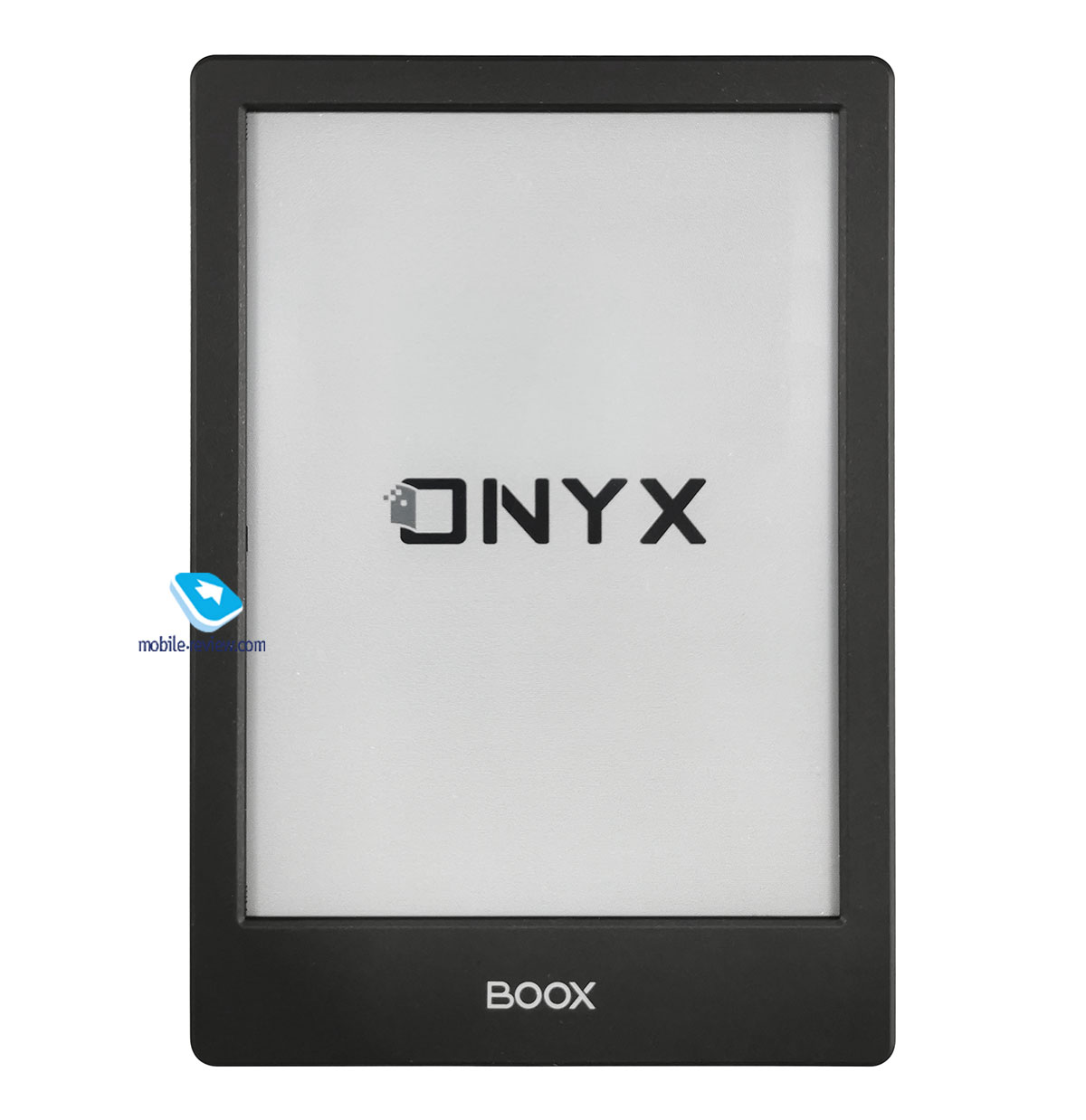
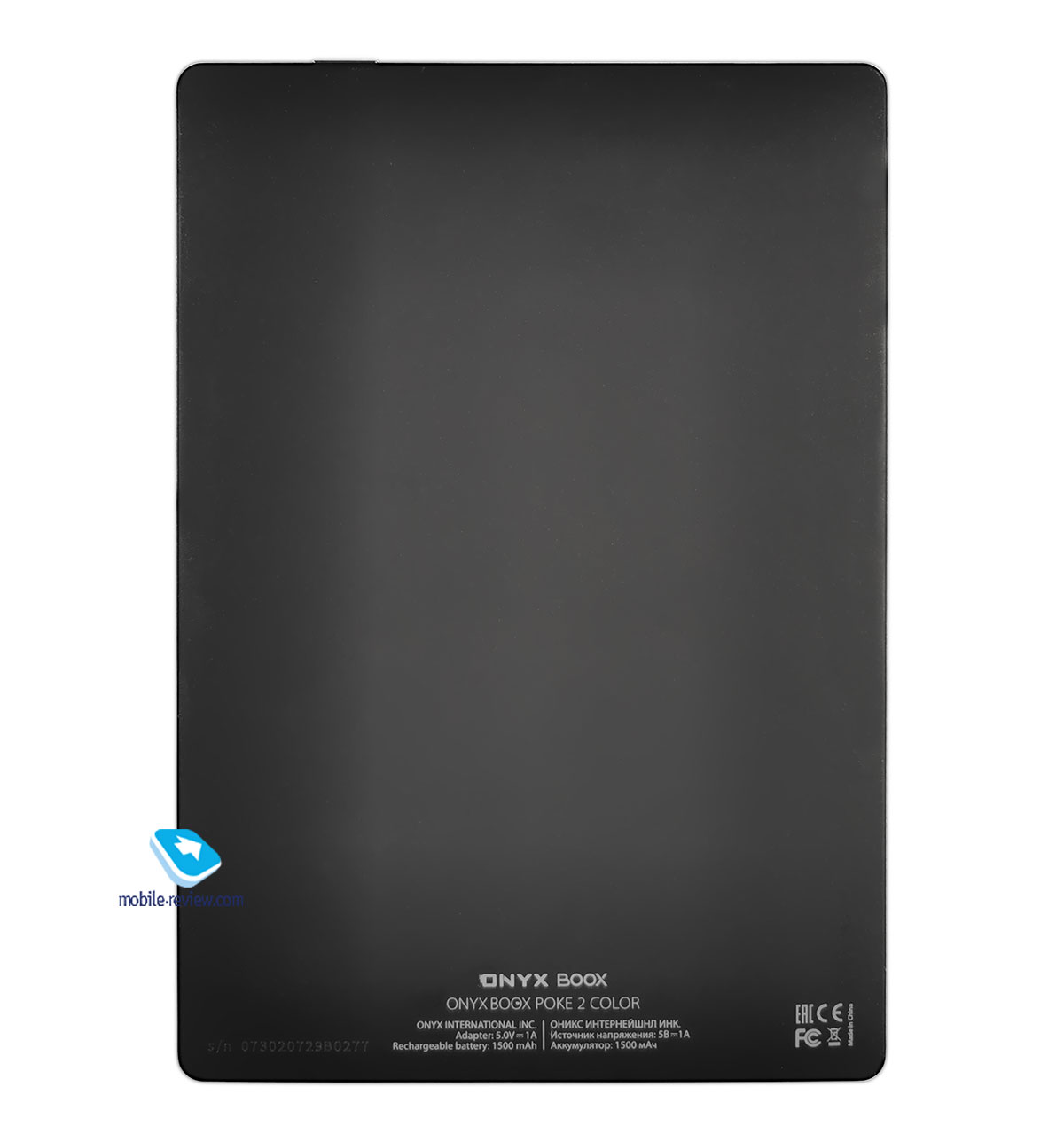
The only physical button is the power on, located on the top end almost in the very right corner. It is made of metal with a built-in LED indicator. The side faces of the device are devoid of any elements. At the bottom end, right in the center, there is a microUSB connector, and to the left of it, literally a few millimeters away, there is a microphone hole. By the way, it serves for a non-trivial function by the standards of book readers – creating voice notes.
Dimensions – 153 x 107 mm with a thickness of slightly less than 7 mm. Weight – 150 grams excluding cover weight. The e-book turns out to be comparable in size to modern smartphones (except for the “extra” 3-4 cm wide), in the hand it is quite comfortable both without a cover, and with it.
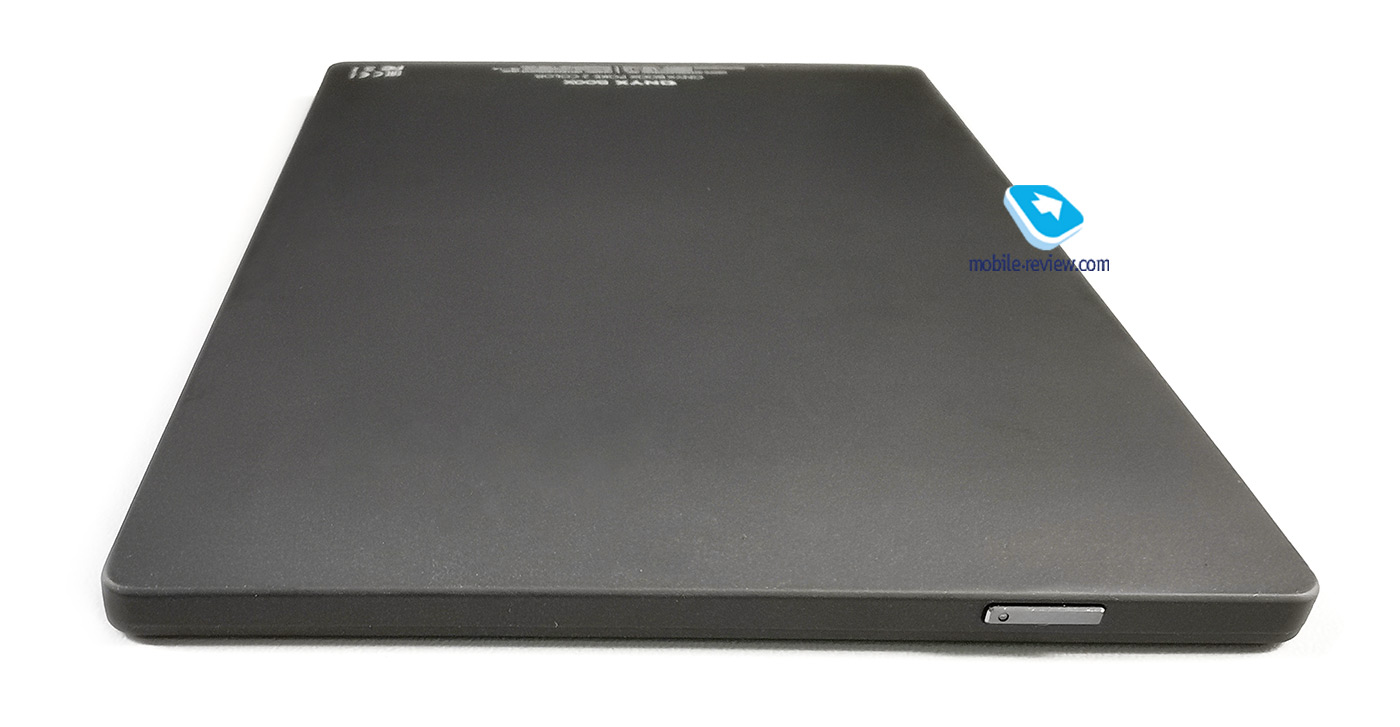
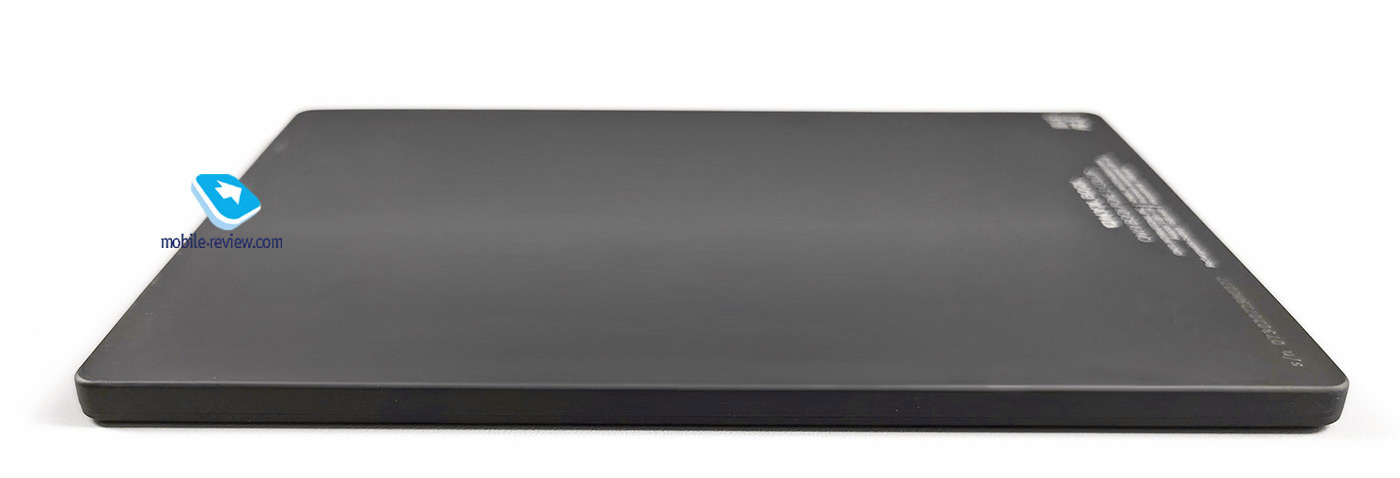
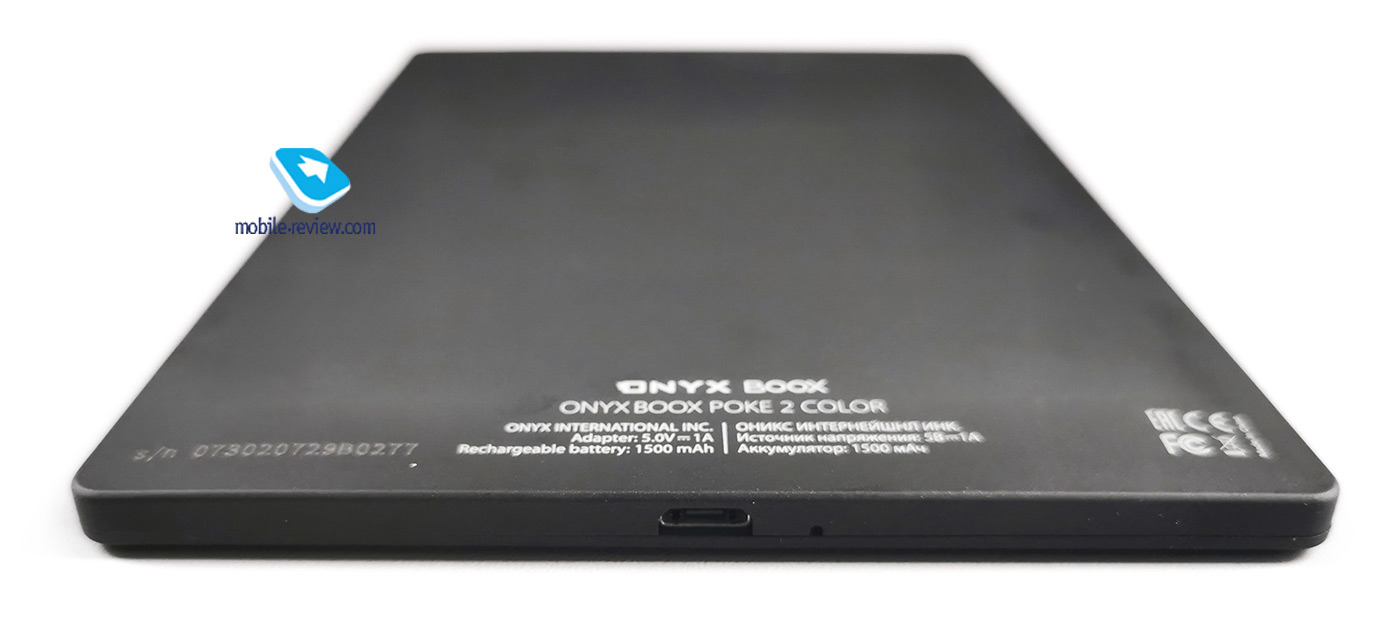
Overall, I liked the Poke 2 design even more than the flagship Monte Cristo. The only thing I didn’t like was the cover, the advantages of which I can attribute only to the strength and potentially high wear resistance. I would not unambiguously write down the minuses of the microUSB connector. First, there is a cable included. Second, you don’t need to connect very often. Yes, this is a power connector, but the operating time is such that even at maximum load, the battery will not need to be recharged more often than once a week.
Screen
| Characteristics | Value |
| Screen diagonal | 6 inches |
| Display resolution | 1448 x 1072 dots |
| PPI value | 300 (100 for colored areas) |
| Matrix type | E ink kaleido |
| Sheeting | no |
| Oleophobic coating | There is |
| Automatic brightness control | No |
| Multi-touch support | Present, up to two simultaneous touches |
The screen is always the key element of an e-book, but in the case of color E Ink, it gets the most attention. Although in the material about PocketBook 633 Color it has already been said about what Kaleido technology is, I will briefly remind you of the essence. In a standard screen based on electronic ink, drawing occurs by changing the electric field of the black and white pigment particles. That is, a color image on such a screen cannot be obtained in principle. But such a screen is as close as possible to real paper, works on reflected light and does not consume energy in a static image. To obtain a color image, you need to add an RGB filter. But if you use the standard version, then the screen will reflect only 1/3 of the incident color compared to black and white E Ink. Therefore, Kaleido technology uses not only standard color pixels, but also white ones. As a result, it was possible to compensate for the drop in brightness (although such a screen will not work without backlighting). To build an image in black and white mode, 100% of subpixels are used, so the density reaches 300 ppi, but for color – only subpixels with color filters. Actually, this explains the declared density of 100 ppi. In reality, the density for color images will be slightly higher, since they will have black and white areas, and the screen itself allows you to have different densities in different parts.
Но это теория. Практика такова, что экран E Ink Kaleido совершенно не похож по восприятию ни на один другой современный экран. От всех вариантов LCD он отличается более блеклыми цветами и откровенно недостаточной яркостью, соответствующей скорее дешевой газетной печати, чем электронному экрану. С AMOLED лучше вообще не сравнивать, между ними пропасть, в которой потеряется Эверест со всеми Гималаями. Но не меньшая разница и с привычными черно-белыми E Ink. Сетка цветного фильтра из-за своей низкой плотности всегда видна. Это не возможность увидеть невооруженным глазом пресловутый «пентайл» — это сетка, которую видно безусловно. Само изображение выглядит именно как дешевая газетная печать, оно всегда рыхлое, цветной вариант это подсвечивает максимально, на черно-белом изображении видно меньше, но восприятия качественной полиграфии уже нет.
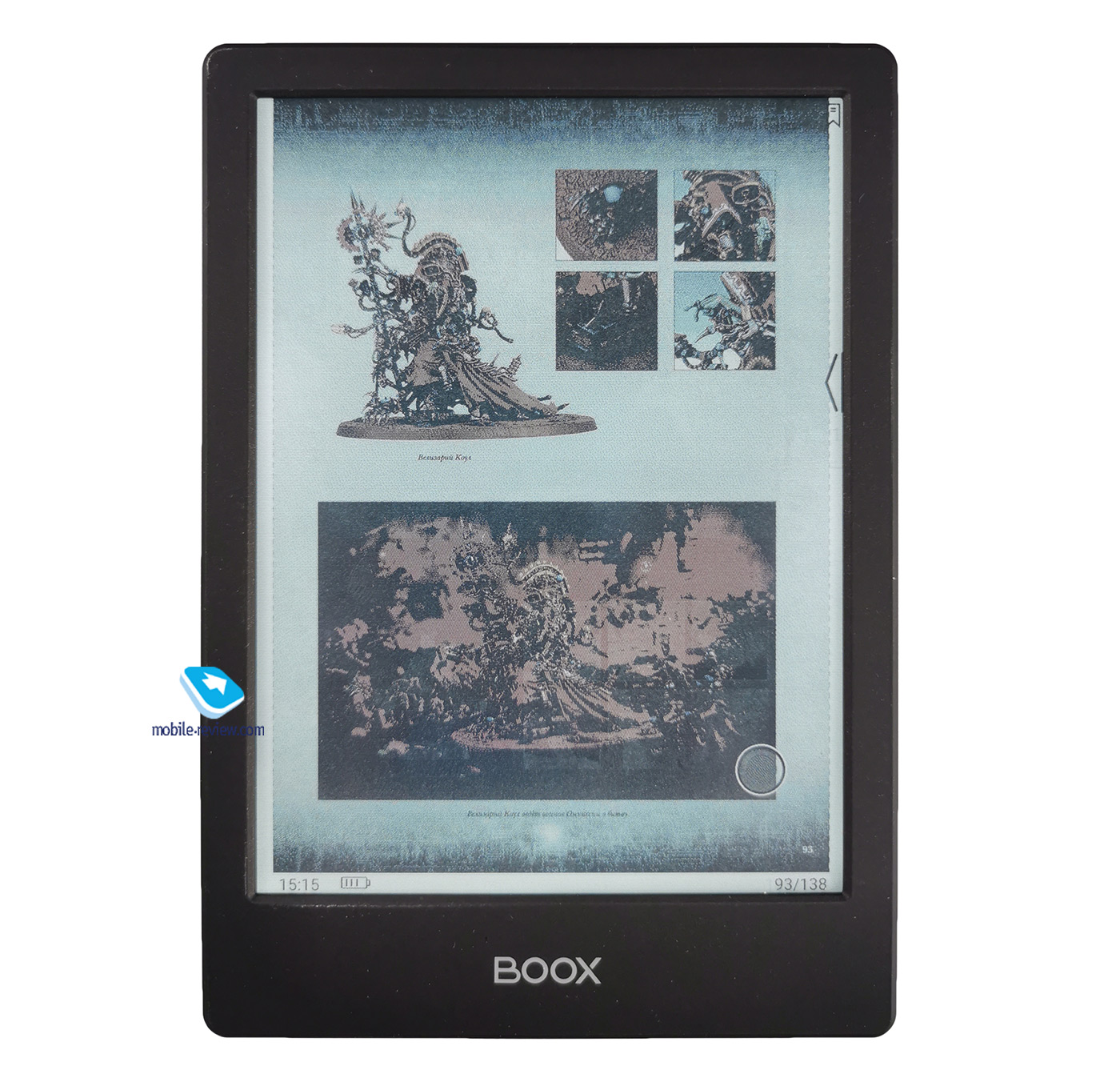
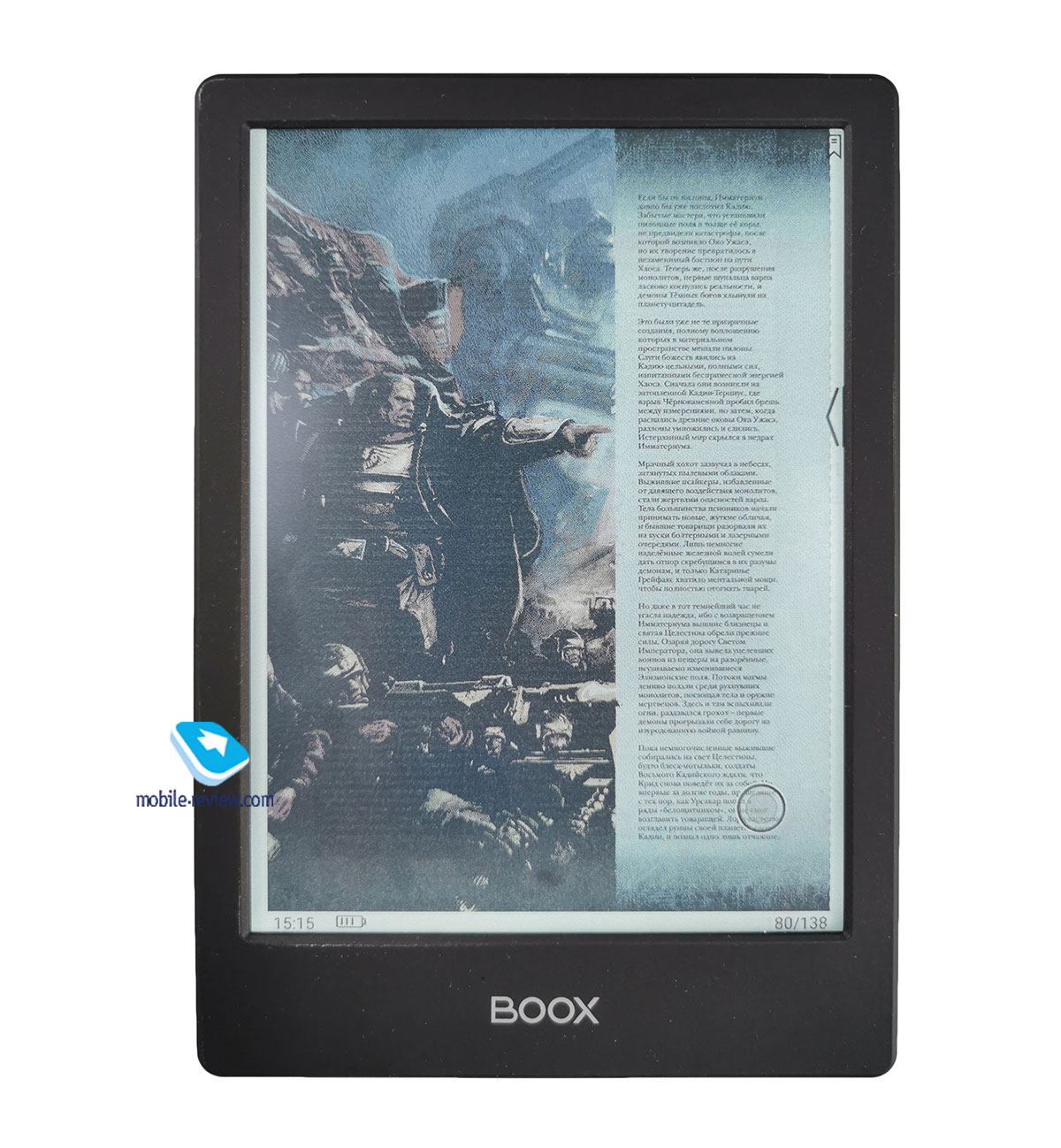

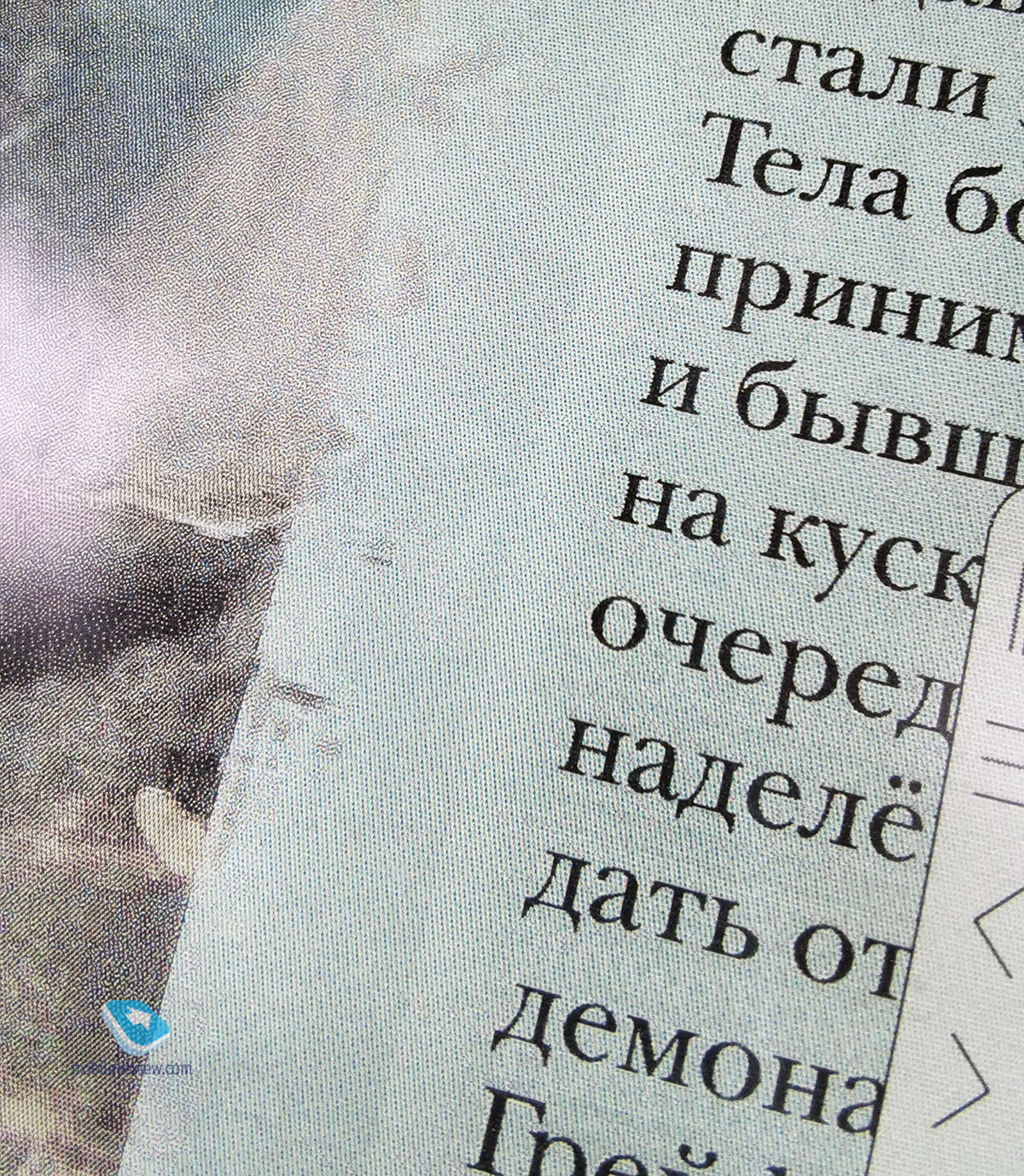
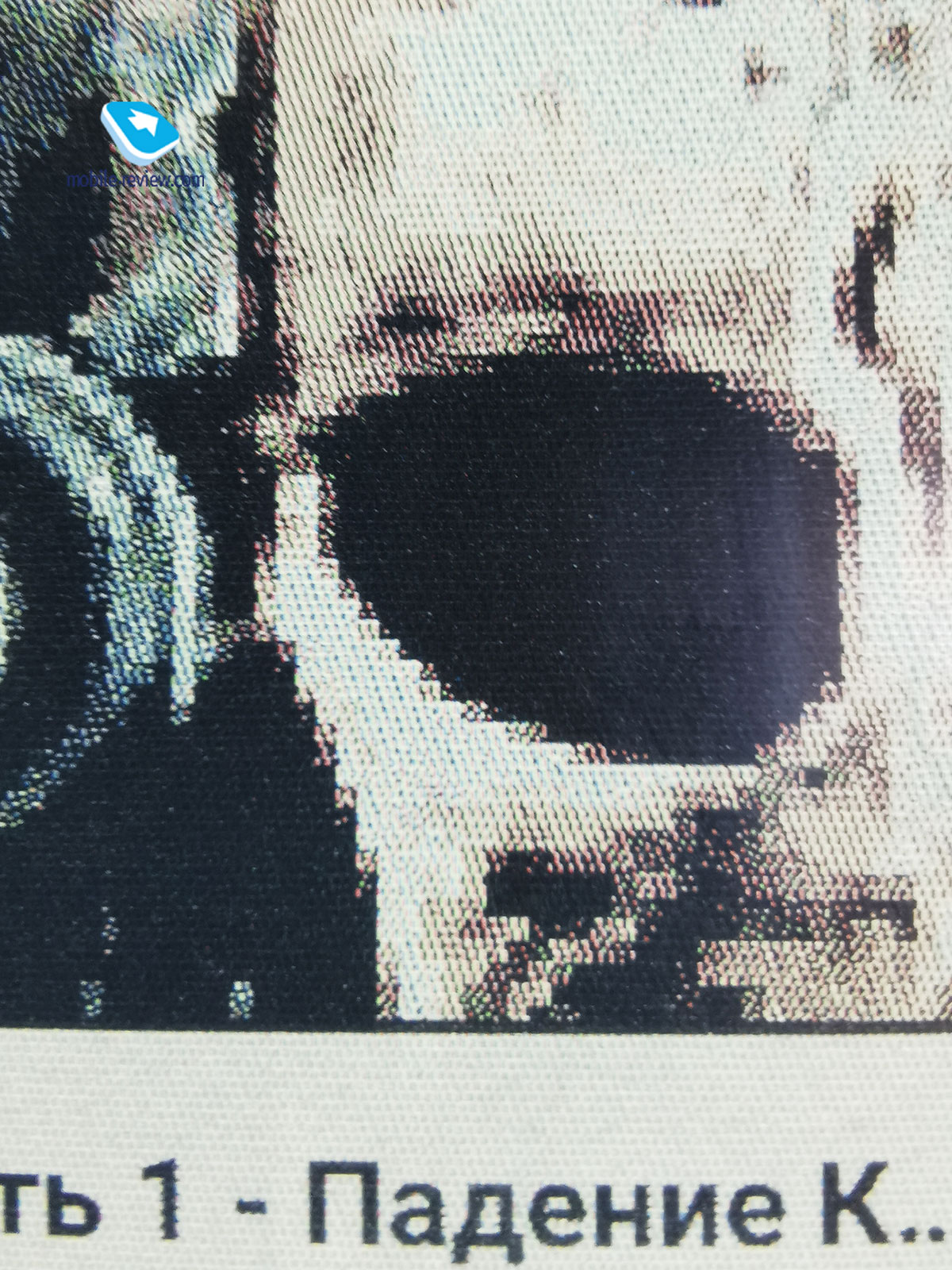
These are the cons. The advantages are the same as for the usual black and white E Ink – no power consumption with a static image. Whether the ability to see some colors (far from natural) justifies the disadvantages, everyone will decide for himself.
Also, due to the nature of the color screen, Poke 2 Color has ditched the newer MOON Light 2 with adjustable tone in favor of adjustable MOON Light. Probably, the results that can be obtained from the combination of bright orange backlighting with a color image seemed too specific to ONYX BOOX engineers. The backlight is always cold, has 24 levels of brightness gradation and the ability to completely turn off. There is no automatic adjustment.
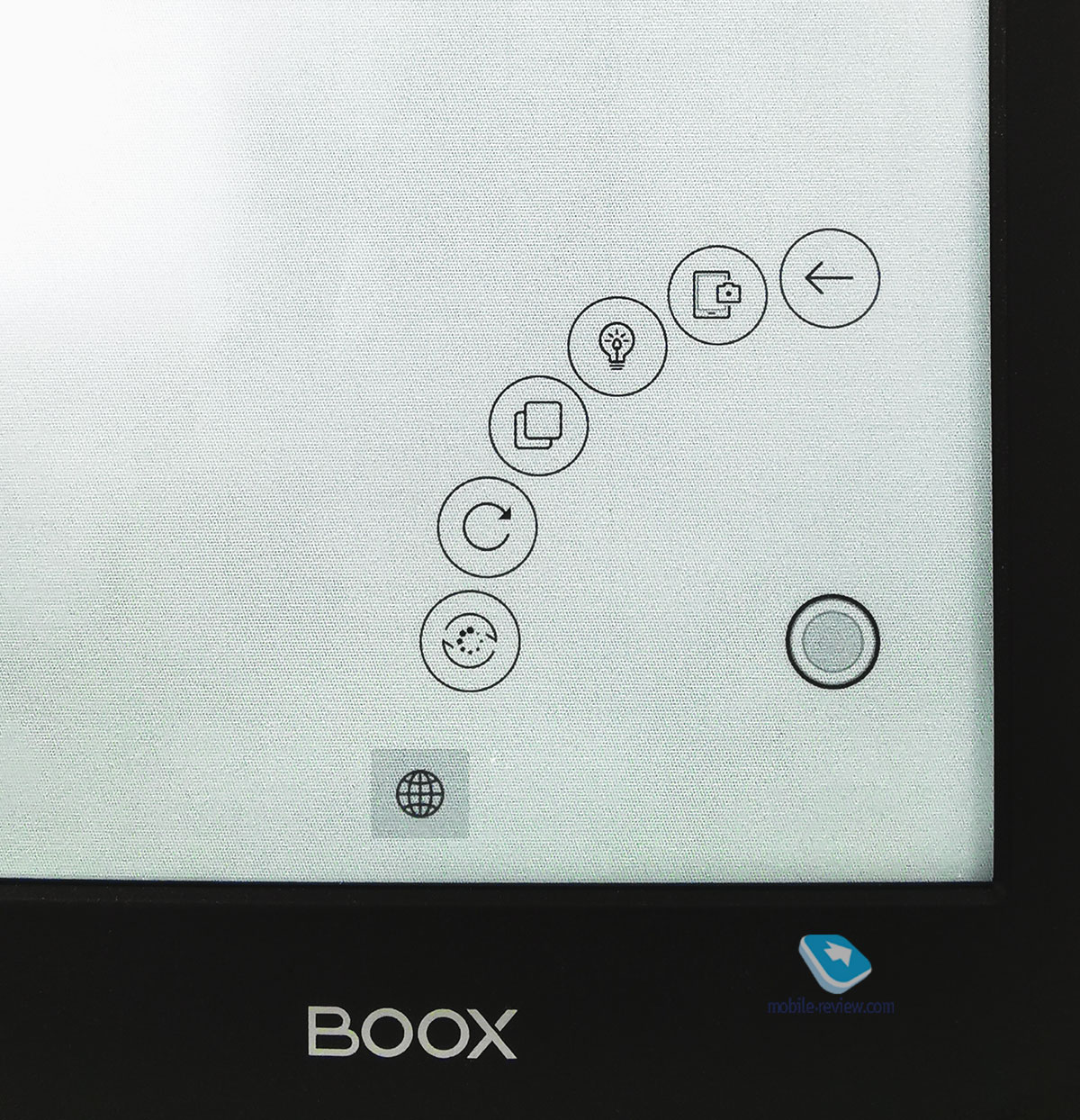
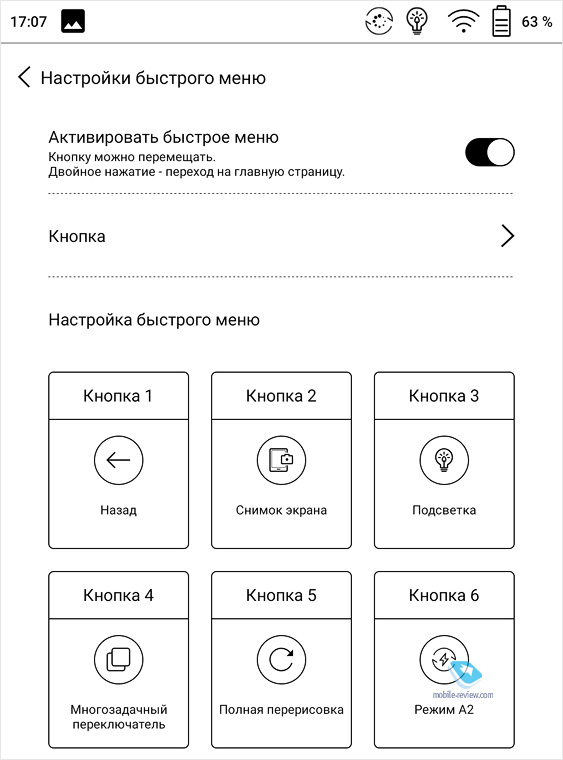
Tablet control is fully touch-sensitive. The sensitivity of the panel is good, there is a minimum of erroneous operation or non-operation. A shortcut button is used for control, allowing you to configure a number of functions. By default, this is “Back”, a screenshot, backlight adjustment (brightness only), application carousel (list of recently called, memory cleaning), screen refresh (fighting artifacts), screen refresh mode (fast / normal).
Software features, speed of work
The Poke 2 Color e-book is to a certain extent a landmark event for ONYX BOOX readers on Android OS. Unlike even the current flagship of the company, here is not only a relatively fresh Android 9.0, but also a productive platform. The reader is built on the basis of the Qualcomm Snadragon 625 chipset with a clock frequency of 2 GHz and 3 GB LPDDR2 RAM. By the standards of tablets or smartphones, the platform is outdated, but for an e-book reader this performance is more than enough. If usually a comparison of e-books with proprietary software and with Android OS ended in a total fiasco in terms of operating speed, then when directly comparing ONYX BOOX Poke 2 Color and Pocketbook 633 Color it was a book with proprietary software that looked like a “brake”. In general, of the disadvantages of the Android OS in this device, only its gluttony in terms of the occupied memory space remains. Of the 32 GB, only about 22 GB will be available to the user. In the absence of an expansion slot and a greater “weight” of colored content, these are not the most pleasant features. But the rumors about the gluttony of the Android OS in terms of batteries were greatly exaggerated, but more on that later.
As you’d expect, Poke 2 saw a pretty cut-back on the operating system. There are no Google services in it, and from the applications in the basic version there are reading tools AIReaderX Pro (OReader) and Neo Reader 3.0, an e-mail client, a branded browser, a voice recorder, a calculator, its own application store, an audio player, a dictionary and a clock. If this set is not enough, then the existing application store will help you. To the services of more advanced users – all the possibilities for customizing the Android OS.
If we talk about the possibilities of library synchronization, then the model provides three options. The first is the classic cable connection. You can connect the e-book reader to a computer, or you can connect a USB flash drive to it via a cable. The second option is Wi-Fi synchronization. Everything is simple here. Connect the book reader and the device with which you want to synchronize the library to the same Wi-Fi network, enter the address indicated on the screen of the book reader in any browser of your computer or smartphone, or scan the QR code, after which the files can be sent directly in the browser. The third option is also a Wi-Fi transmission, but if the devices are not on the same subnet. Then the transfer will go through the cloud storage push.boox.com. You can also set up synchronization via any other cloud storage, but after installing the appropriate client on the e-book reader.
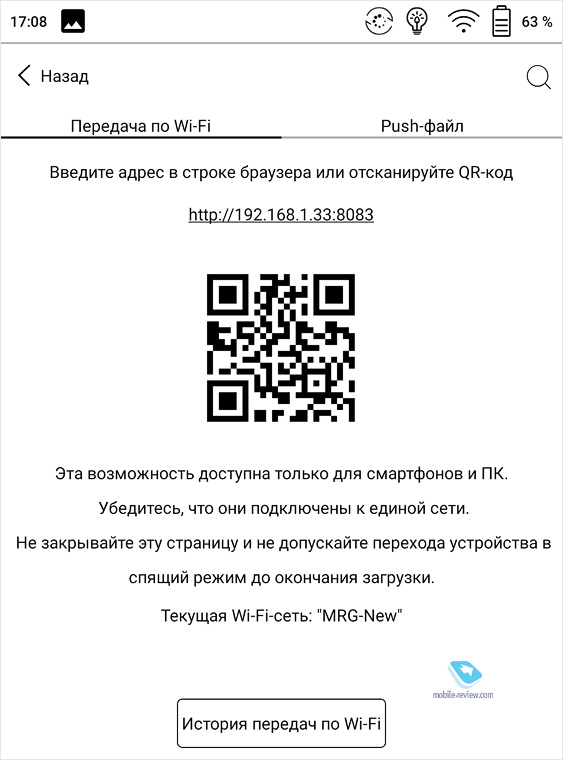
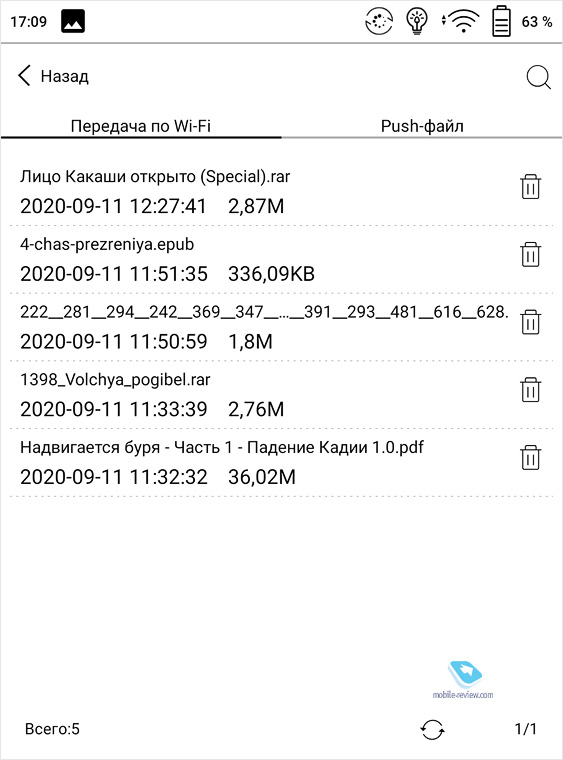
For reading, as you can see, by default it is suggested to use one of two programs, AIReaderX Pro and Neo Reader 3.0. Moreover, the last program was “hidden”. To read through it, you need to use a long tap on the selected book in the library, then the “reader” selection menu will appear. However, the features do not end with the hidden program. AIReaderX Pro is defined as Oreader in some menus, for example, this is how it will be called when you want to see the library on the device. The difference between the applications is quite significant. In addition to the settings and the implementation of autoscrolling, they work with dictionaries in different ways (Neo Reader allows you to translate not individual words, but whole fragments), and Neo Reader also has the ability to read books using the TTS function. The latter is implemented through Google with all the ensuing features of this service. On the side of AIReaderX, there are great opportunities for customizing the application for yourself, but Neo Reader can open pictures from files and supports PDF, DjVu formats. The general list of supported formats for Poke 2 Color looks like this: TXT, HTML, RTF, FB2, FB2.zip, DOC, DOCX, PRC, MOBI, CHM, PDB, DOC, EPUB, JPG, PNG, GIF, BMP, PDF, DjVu , MP3, WAV, CBR, CBZ.
As you can see, there are also music formats among the supported formats. The player is extremely simple – it is a standard solution in ONYX BOOX e-book readers. As a tribute to fashion – the lack of an audio jack. It is assumed that you already have Bluetooth headphones anyway and connect them to the e-book without any problems.
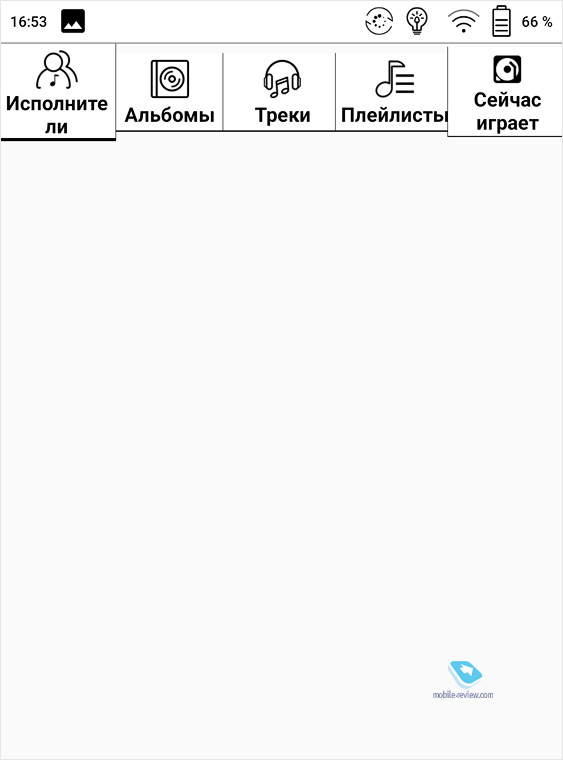
By the way, if you close the complete cover, the e-book goes into standby mode, stopping all programs. Including the player. Accordingly, you will not be able to listen to music further. This is another reminder that an Android reader is not at all the same as an Android tablet.
Interfaces, battery
In terms of connectivity, the development of Poke 2 was frankly focused on wireless communication. The e-book received a completely modern Wi-Fi module with support for IEEE 802.11 b / g / n / ac communication standards, but without support for the 5 GHz band. The default Wi-Fi connection does not work all the time, you will need to select the appropriate item in the menu to enable it permanently. I have not experienced any problems with connections and synchronization with a laptop and a smartphone.
Bluetooth 4.1 is more than a modern and adequate solution for the e-book market. The device connection is standard, there are no problems with data transfer. The sound quality is the most common, there are no surprises or failures.
The USB connector can also be used for connection. USB 2.0 protocol with USB OTG support, there are also no features that could be noted here.
A more interesting question is autonomy. All previous experience suggests that the Android OS alone on board should lead to a faster discharge of the e-book reader. And then there is the screen with virtually constantly working backlight. And a battery with a capacity of only 1500mAh. However, real life shows that such a prejudice is fundamentally wrong. Most of the time, the operating system is in a dormant state, and the energy efficiency of solutions from Qualcomm is traditionally at its best. So even the most heavy load (setting, downloading books through a browser, surfing the Internet) gives the result of about 1 hour of active use – ~ 10% of the battery capacity. You will still not be able to watch YouTube on a device with an E Ink screen (the reader pulls out in hardware, but the picture on colored electronic paper is an acid trip, not a digestible image), and everything else does not give a large enough load for the platform.
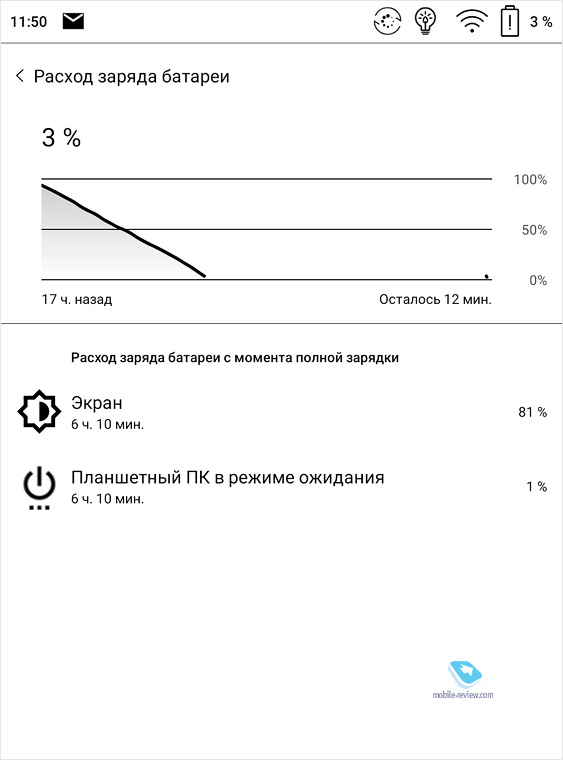
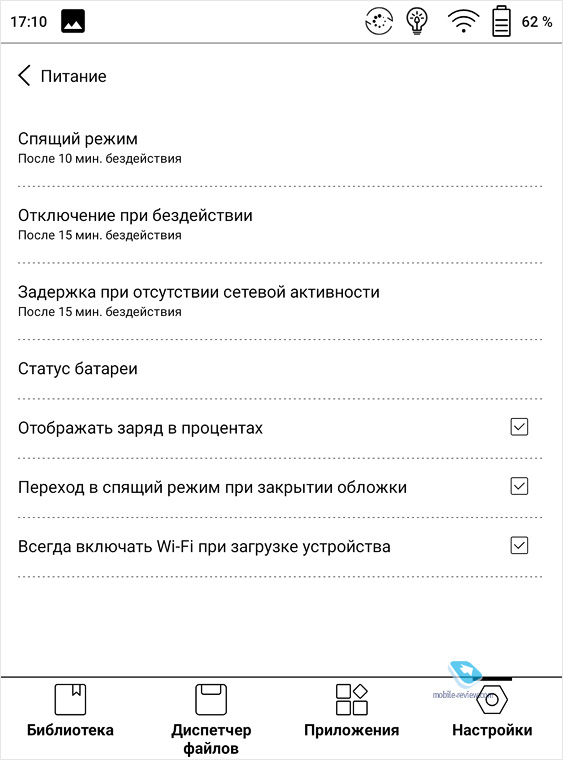
In reading mode, the result is quite expected – at maximum brightness 7-8 hours of screen time. I specifically cite the screen time as the main parameter, since the constantly working backlight has a greater effect than the actual rendering of the pages. If someone is interested in the pages, then such a test gave a result of 4000 pages (maximum brightness, 10 seconds per page). Speaking about a realistic use case, I managed to discharge the reader to half the capacity in one week. This volume includes full customization, active use of the browser for an hour and about two hours of reading daily (about 1000 pages). It is important to note here that I adjusted the brightness all the time for comfort, the maximum was never required, 15-20 divisions out of 24 were enough. The manufacturer does not provide any data on the battery life, but according to personal feelings, you can count on a time from two weeks to a month depending on the intensity of use.
The e-reader is charged with a current of 1A in about two hours.
Impressions, competitors
ONYX BOOX Poke 2 Color is only the second e-book reader on the Russian market with an E Ink Kaleido color screen, so it’s rather difficult to say how justified its price of 20 thousand rubles is. The fact is that the only competitor is the Pocketbook 633 Color. However, direct comparison of these models is still difficult. The fact is that the Pocketbook platform is proprietary. This is associated with both the numerous features of the system’s operation, and the almost complete absence of customization. Theoretically, it would have to compete due to the lower cost (about 16 thousand rubles in retail) and longer operating time, but the latter does not work. In everyday use, Poke 2 and Pocketbook 633 show similar results, the difference between them in battery life is at the level of differences in reading speed by different people. On the side of Poke 2, there is an undoubted advantage in terms of speed. And if for black-and-white e-book readers this circumstance was of little importance, then for color e-book readers the performance plays a big role, since it affects the work with heavy files, of which there are much more color files. The ability to install a third-party reading application is also becoming important, which is associated with the peculiarities of working with color images.
As a result, it turns out that you can only compare Poke 2 and Pockebook 633 on the screen. And formally there should be parity: the diagonal is the same, the technology is the same. However, the devil, as usual, was hidden in the details. ONYX BOOX and Pocketbook approached the screen setup differently. The Poke 2 has a brighter screen, but the image is looser. Pocketbook 633 has a much darker screen, due to which the colors are richer. It is not necessary to say that one of the models gives a more natural image, both of them are extremely far from something similar to realism. There is no point in looking at pictures on them, with the same success it would be possible to publish a catalog of Kuindzhi’s works with the quality of a newspaper of free ads. Overall, we can say that the Poke 2 does better with darker images, while the Pocketbook 633 does better with lighter images. In this case, the first device loses detail in light areas, and the second – in dark areas.
Curiously, everyone who saw the comparison live chose Poke 2 as the nicer option, while when viewing the photo, most chose the Pocketbook option.
And here we enter the shaky ground of understanding why a device with a color E Ink screen is needed at all. It should be an image that is critically important to see in color, but at the same time the very quality of the displayed colors should not matter. Various charts and diagrams come to mind at first glance, but it would be more logical for them to choose a larger format of an e-book, since it is not possible to see the details on a 6-inch screen. However, I am afraid to even imagine the possible cost of a 10-inch e-book reader with E Ink Kaleido, it will be too niche device.
Чисто развлекательный вариант — это чтение детских книг или комиксов. Однако для детей картинка получается не слишком привлекательной, ярких и сочных цветов нет, а для тех, кто постарше, наличие цветных или нецветных картинок в книжке уже не имеет такого большого значения. Еще печальнее ситуация с комиксами. Покупая их в электронном варианте, вы видите, как должно быть, на цветном экране телефона или компьютера. А потом в букридере. Лично мое впечатление — как-то не очень.
Единственный вариант, который оказался оправданным для меня, — это чтение такого специфического издания, как книга правил по настольной игре Warhammer 40k. Здесь удачно совпал переход издателя на полностью цветные книги со спецификой изображений в них. Разумеется, совершенно не критичным было бы читать ее и в черно-белом варианте, но цветной намного приятнее. Кстати, именно темная цветовая гамма мрачного мира далекого будущего лучше выглядела на более ярком экране, Pocketbook 633 некоторые изображения превращал в плохую ксерокопию. Отсюда и вывод, что на данный момент цветной E Ink экран — это очень нишевое решение, которое должно соответствовать вашим специфическим потребностям.
As for the ONYX BOOX Poke 2 Color itself, the e-book came out very successful. Good design, reliable and productive platform, customization options and good battery life. The price of 20 thousand rubles pumped up a little, but the overpayment is justified here if you want to try something new, albeit not the most practical.
Back to content >>>
Related Links
Share:
we are in social networks:
Anything to add ?! Write … eldar@mobile-review.com





